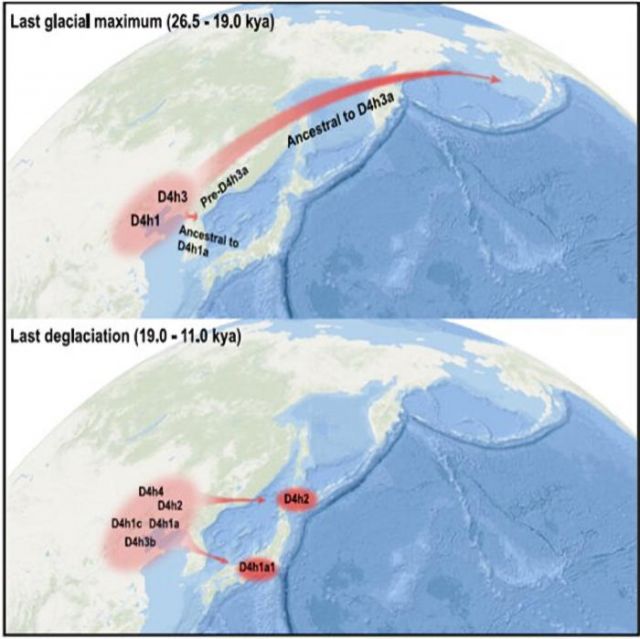Scientists believe that during the last ice age humans migrated from asia to north america by foot across the bering strait but that they continued on to other locations as the areas around the strait have very small populations

Scientists believe that during the last ice age, humans migrated from Asia to North America by foot across the Bering Strait, but that they continued on to other locations as the areas around the Strait have very small populations.

The Bering Strait, located between northeastern Siberia and northwestern Alaska, is a narrow body of water that connects the Pacific Ocean to the Arctic Ocean. It separates Asia from North America and has played a significant role in shaping the migration patterns of ancient humans.
During the last ice age, approximately 15,000 to 20,000 years ago, Earth experienced a period of extreme cold known as the Last Glacial Maximum. Massive ice sheets covered much of the northern hemisphere, including parts of Asia and North America. These expansive ice sheets caused sea levels to drop, revealing a land bridge between the two continents.

Scientists believe that early humans, likely originating from the Asian continent, took advantage of this land bridge and crossed into North America. This migration across the Bering Strait is known as the Beringian Standstill hypothesis. It suggests that humans and other mammals used the exposed land bridge, known as Beringia, as a pathway to colonize the Americas.
Evidence supporting this hypothesis includes the presence of archaeological sites in both Siberia and Alaska that exhibit similar cultural characteristics and tool technologies. Additionally, genetic studies have shown similarities between Native American populations and certain Siberian groups, further supporting the idea of migration across the Bering Strait.
While the Bering Strait provided an initial connection between Asia and North America, scientists believe that humans did not settle in the region permanently. The limited resources and harsh environmental conditions, including the presence of large ice sheets, would have made it difficult for early humans to thrive in the area. Instead, it is thought that these early migrants continued their journey southward, eventually populating other parts of the Americas.
Today, the areas surrounding the Bering Strait have very small populations. The challenging environment and remote location have limited human settlement in this region. However, the Bering Strait remains an important area for scientific research and understanding human migration patterns.
In conclusion, scientists believe that during the last ice age, ancient humans migrated from Asia to North America by foot across the Bering Strait. This migration served as a crucial step in the peopling of the Americas. While the areas around the Bering Strait have small populations today, they maintain immense significance in our understanding of human history and migration.
Tags
Share
Related Posts
Quick Links
Legal Stuff

